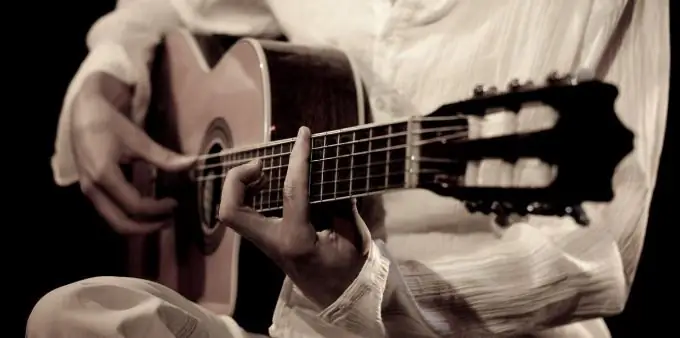One of the main parameters of any musical composition is the key, the "pitch" at which the song is performed. The great thing is that you can always change the key for yourself, without changing the melody at all. This process is called transposition.

Instructions
Step 1
Find a site with a transpose function. For example, if we talk about the guitar, then Ultimate-guitar.com and falshivim-vmeste.ru have a built-in “transpose chords” button in the interface. That is, while on the page of a particular song, you can press the "down a half step" key, and chords will automatically be changed to new ones.
Step 2
Use tables. There are many transposition tables on the Internet that are very convenient to use. Rows in tables - key (A, B, C), columns - specific chords. Thus, to find out how your new chord will sound, you find the column with it and go up / down as many lines as you need. The downside to using tables is that you need to be able to identify the tonic or know the key of the song.
Step 3
Transpose manually. To do this, you need a basic skill - knowledge of the sequence of notes (do, re, mi, fa, sol, la, si). The transposition process is to raise (or lower) the sound of each chord by a certain number of semitones. For example, if you have an Em-G-D-C melody, you want to lower it two tones (or four semitones). Then: Em-4 = Cm. Likewise, G-4 = D #, D-4 = A #, C-4 = A. The sharp is obtained due to the fact that in the intervals of C-Do and Mi-Fa, not a tone, but a semitone. It is also worth noting that the “color” of the chord does not change when transposed - the minor or major sound is preserved, as well as the septum performance (Dm7 after reduction will turn into Hm7).
Step 4
On the guitar, the barre technique helps to transpose. The bottom line is that transposition is to move each chord an appropriate number of frets to the left or right. You can see this for yourself by checking the above melody: each chord has been shifted 3 frets to the left. Actually, to use this skill, you need to know what order the different chords are on the fretboard. It should be noted that the setting of the fingers during movement is preserved - the small barre remains small, the large barre remains large.






